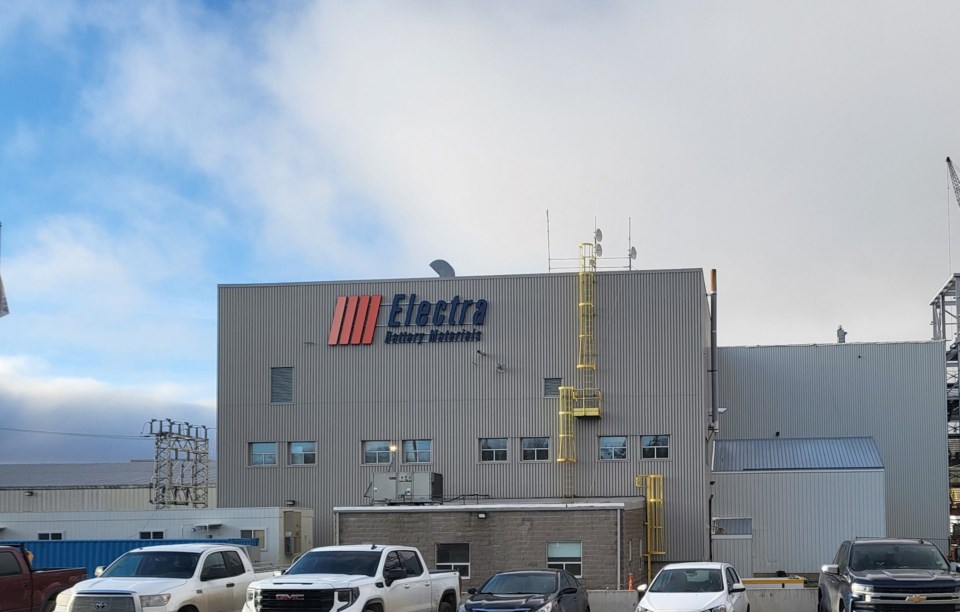The mining of critical minerals is essential to Canada's growth in the electric vehicle sector, said Prime Minister Justin Trudeau and Premier Doug Ford on the occasion of a “historic” and “generational” $15-billion investment by Honda Motor Co. in southern Ontario.
In formulating a strategy to establish secure a “start-to-finish” battery chain ecosystem, Trudeau said on April 25 that Canada has the abundant critical mineral supply that the rest of the world wants, the available skilled talent, and advanced manufacturing capacity to build the innovative economy of the future.
And compared to socially and environmentally dubious mining players like China, “our approach is much more responsible.”
Boosting Canadian critical mineral production means tapping into greenfield areas like the Ring of Fire in the James Bay region.
In the stalled decades-long government process to do that, Premier Doug Ford expressed confidence that a forthcoming deal with Aroland First Nation will help make a crucial next step in the construction of a north-south access road to the Far North mineral belt.
Honda is spending $15 billion on four manufacturing plants in Ontario, including building an electric vehicle battery plant next to its existing Alliston, Ont., assembly plant, which is being retooled to produce electrical vehicles.
Once operational in 2028, the new assembly plant will produce up to 240,000 vehicles per year. One thousand new direct jobs are expected to be created and an estimated 28,000 to 30,000 in economic spinoff jobs in the decades to come.
Queen’s Park and Ottawa are delivering to the Japanese carmaker a hefty incentive package worth a combined $5 billion in federal clean-tech manufacturing tax credits and provincial assistance covering site service costs.
This is the third electric vehicle battery manufacturing plant in Ontario that the province and the federal government are assisting following significant investment dollars for the Stellantis LG plant in Windsor and a Volkwagen plant in St. Thomas.
While Queen’s Park and Ottawa are spending billions in southern Ontario, comparatively little has been announced in upstream investment in Northern Ontario to support the mines and mid-level processing facilities that will feed this ecosystem.
Four lithium companies with mineable deposits in northwestern Ontario are looking to government for help with construction of lithium conversion plants in Thunder Bay, Red Rock and elsewhere in Northern Ontario.
The government funding rollout has been slow.
The recent federal budget has made a commitment for the Berens River bridge and road network to deliver year-round access to Frontier Lithium’s PAK deposit in northwestern Ontario and the surrounding communities.
In Temiskaming, Toronto’s Electra Battery Materials needs US$60 million to finish construction of its nickel, cobalt and battery recycling plant, a project that’s been on hold for a year. The company is considering setting up a second refinery in Becancour, Que.
Honda did say it’s vertically integrated Ontario supply chain will include some processing capability with a new precursor material processing facility formed through a joint venture partnership with POSCO Future M Co., Ltd., a South Korean battery materials company, along with a separator facility through a joint venture partnership with Asahi Kasei Corp., a Japanese chemical company.
Whether any Northern Ontario communities are in the running for these plants remains to be seen. Honda said further details will be rolled out over the next six months.
Promoting a domestic mines-to-EV assembly plant supply chain was clearly on the minds of Trudeau and Ford, even if the path for government cooperation in the Ring of Fire remains murky to get there.
The two leaders fielded a media question that both governments might be cutting regulatory corners to expedite mine production in Canada.
Trudeau responded that Canada is widely regarded as a responsible and reliable supply chain partner when it comes to upholding labour standards, working with Indigenous people, and doing what’s right on the environmental front to offer a clean product to the world.
“We will continue to invest in the mining sector in Canada. We’ve extraordinary mining expertise, but we will do that responsibly in partnership with Indigenous people, unions and protection of the environment.”
Ford pushed back against a question that First Nation communities in the area of the Ring of Fire are against development because they have not been properly consulted.
The premier disputed that, calling Marten Falls and Webequie, the two First Nation communities closest to the Ring of Fire, great partners that are leading the environmental assessment processes on their respective sections of the road.
“They’ve been an incredible, incredible partner and we look forward to getting shovels in the ground.”
Ford revealed an announcement is coming soon on an access road deal with Aroland First Nation that might clear the path for the road.
Ford mentioned he’s had “great conversations” with the Aroland leadership and that the province is close to signing an agreement that would give the community control of the first 80 kilometres of the road. Aroland is situated near the southern terminus of the road where it would connect with the provincial highway system at Nakina.
Driving a road to the Ring of Fire, Ford said, would create jobs and opportunities in the region, provide better access to health care, lessen the cost of food and supplies, and extend broadband and hydro power to the communities.
“This is going to change their lives.”
Mine development in the Ring of Fire has been largely stalled since the discovery of nickel and chromite in 2007-'08.
The latest hurdle to development has been the imposition of a federal regional assessment by Ottawa in 2020. The fledgling socioeconomic process has been rejigged in the past year to involve more Indigenous oversight.
In the meantime, the Ontario government has launched a legal challenge against the legitimacy of the entire federal Impact Assessment Act.
